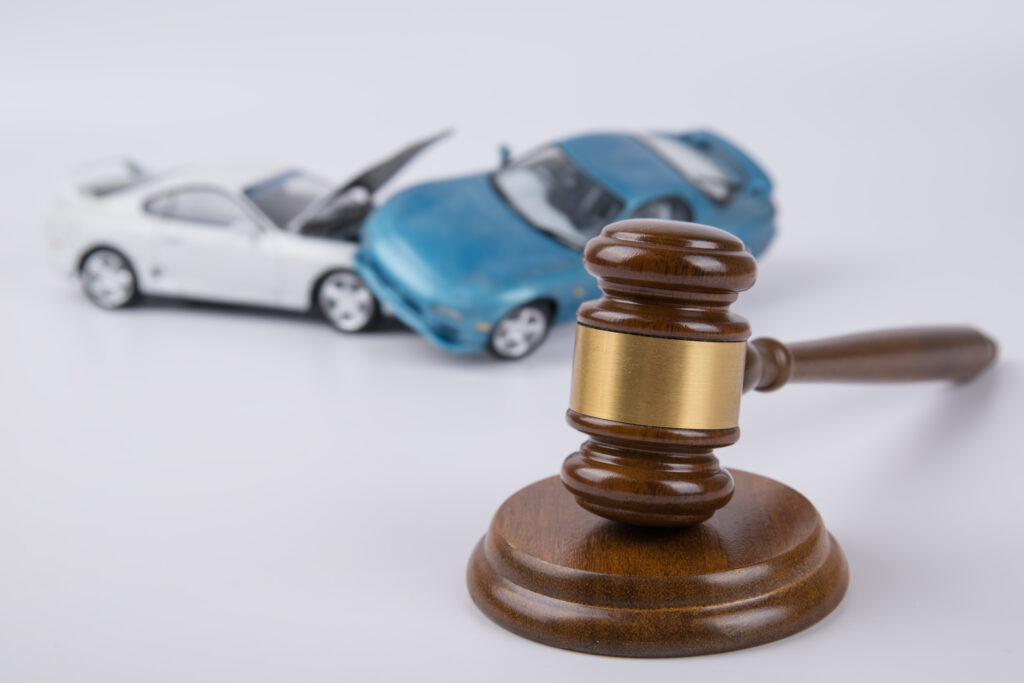
PHONE: 803.799.7900
PHONE: 803.799.7900
October 17, 2022

Determining fault in a car or truck accident isn’t always a black-and-white process – especially if multiple people are to blame. According to the doctrine of comparative negligence, the responsibility of each involved party is based on their respective contribution to the accident. But what is comparative negligence, and how is it used in the state of South Carolina? Let’s review.
If you’re searching for a Columbia lawyer for assistance with a car, motorcycle, or truck accident, look no further than Bernstein & Bernstein. We’ve been helping people in the community and state since 1943, and our team will fight hard to get you the benefits you’re entitled.
Comparative negligence is a law that dictates how the responsibility for a motor vehicle accident is shared between the parties who were directly involved in the event. If two parties are involved, comparative negligence determines who will receive compensation for losses and how much will be received.
For example, if John is speeding down a street and Jane makes a left-handed turn in front of him, striking his car, both drivers may have contributed to this accident. The insurance company will use comparative negligence to determine the set liabilities for John and Jane for damages.
Three types of comparative negligence laws are followed in the United States – pure comparative negligence, modified comparative negligence, and slight/gross negligence. Each one varies on the percentage of fault assigned to each party involved in the auto accident, and which type of comparative negligence is used depends on where it occcurs.
We’ll explain the three types of comparative negligence in more detail and let you know which rule is used in South Carolina.
Three different types of comparative negligence exist in the United States.
Pure comparative negligence allows the plaintiff (the party who initiates a lawsuit against the defendant) to recover damages even if they are assigned 99% of the fault for the accident. They can still recover 1% of the damages assessed from the defendant. California and New York are two of the 13 states that follow this rule.
Modified comparative negligence does not allow the plaintiff to recover monetary damages if they are assigned at fault beyond a certain percentage. Ten states, including Colorado and Maine, follow the 50% modified comparative negligence rule – meaning that the plaintiff can’t receive damages if their fault percentage for the accident is 50% or more.
Many states, such as Illinois and Oregon, follow the 51% modified comparative negligence rule. So if the plaintiff’s fault is 51% or higher, they will not be able to recover damages.
The slight/gross negligence rule is only followed in one state – South Dakota. With this rule, fault percentages from a car accident are replaced by “slight” and “gross” contributions to the accident.
The amount of award in the accident is larger if a plaintiff’s contribution to an accident is slight and the defendant’s contribution is gross (meaning reckless or conscious disregard for the injured party’s safety).
The amount awarded to the plaintiff is less if their contribution to an accident was more than just a “slight” amount. Let’s say, for example, that a car drives through a red light and hits someone that was jaywalking. The jaywalker would be awarded fewer damages than if they were legally crossing the street.
It’s important to know what type of comparative negligence your state follows. You hope that you never get into an automobile accident, but if you do, it’s helpful to know what to expect.
South Carolina follows the modified comparative negligence rule. This rule states that as long as the plaintiff is less than 51% responsible for the car accident, they will be eligible for recovery from the defendant. However, it is important to note that the amount of fault the plaintiff shares reduces the amount of damages the at-fault party must pay.
In sum, in South Carolina, accident victims can obtain compensation for damages even if they contributed to the accident, but only if they can prove that they do not have the majority of fault.
If you were recently involved in a car, motorcycle or truck accident in or near Columbia, SC, an attorney could help. Without legal representation, the defendant might be able to successfully establish that you were 51% or more at fault for the accident – removing your right to any compensation. If you utilize a lawyer, they can gather evidence and help prove that you weren’t at fault, keeping you eligible for financial recovery.
If you have been involved in a car, motorcycle or truck accident in South Carolina, you may be entitled to compensatory and punitive damages — but the first step is proving the other party was at fault. Our team of Columbia, SC, auto accident lawyers at Bernstein and Bernstein can help. Call our office at (803) 799-7900 or contact us online today to get started.
"*" indicates required fields
"*" indicates required fields
©2023 Bernstein & Bernstein, LLC
All Rights Reserved.
website by HLJ Creative